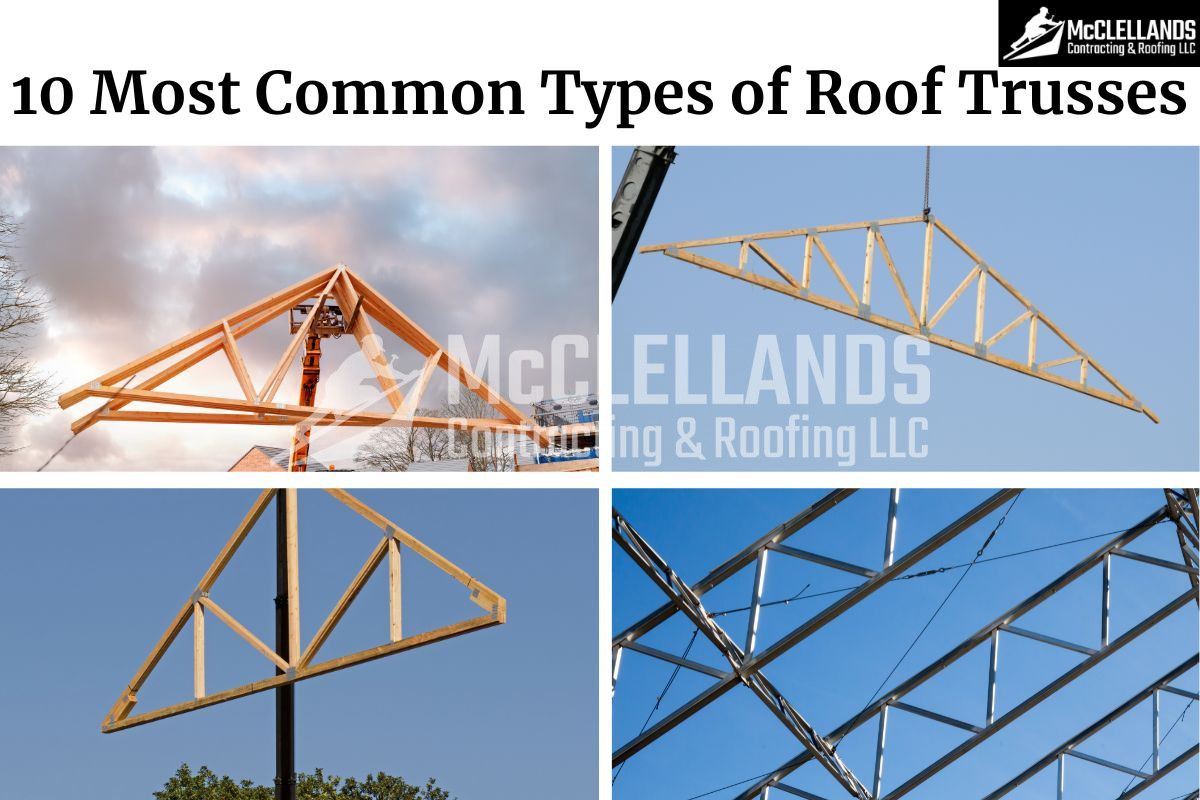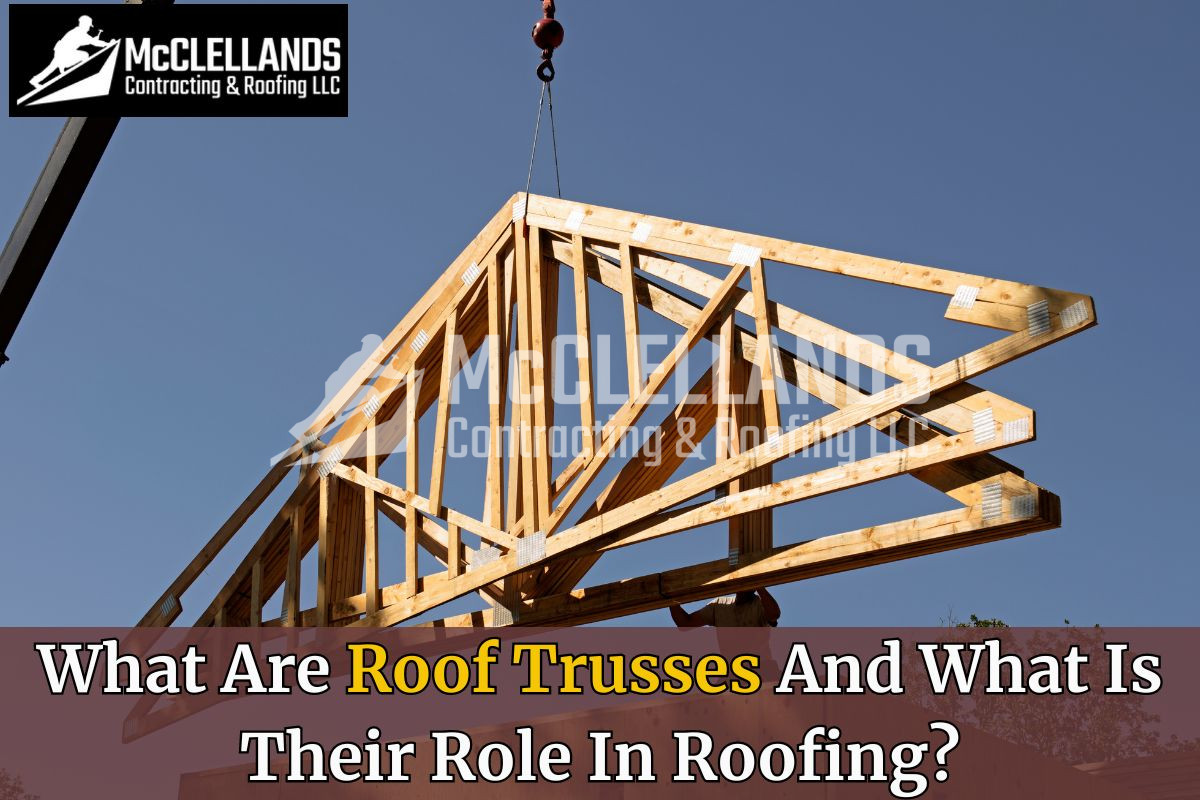Roof trusses are an important component of any roofing system, providing structural support and stability to the roof.
At McClellands Contracting and Roofing, we believe in empowering homeowners with the knowledge they need to best take care of their homes. In this guide, we cover what a roof truss is and its primary functions. We’ll also bring up 10 roof truss designs to help you decide on the one that best suits your new build.
What is a Roof Truss and Its Functions?
The roof truss is a sophisticated architectural component that has the primary job of supporting the entire roofing system. Roof trusses are a standard part of all types of residential roof construction. Even if you're unfamiliar with the term, chances are you've seen one hidden in regular architecture.
A truss is a triangular structure that fits into a roof to sustain the weight of the roofing materials and anything else that will sit on top of the structure. It’s typically made up of three parts, with a top and bottom cord, and structural webbing between the cords. The webbing can be arranged in any way, giving roof trusses the ability to accommodate different sizes, shapes, and roofing materials.
Also Read: What Are Roof Trusses And Their Role In Roofing?
Triangles are widely used in construction due to their exceptional ability to handle heavy loads effectively. They are primarily flat and angled, which makes them ideal for structures like roof trusses. Once they’re constructed off-site, they’re transported to the construction area where they are installed.
Common Types Of Roof Trusses
Roof trusses come in various shapes and sizes, each designed to provide particular benefits. Here are 10 types of roof trusses, along with their features and applications.
1. Scissor Truss
The scissor truss is a popular roof truss design characterized by its V shape. It consists of two diagonal beams that meet at the apex of the truss, allowing for the creation of vaulted ceilings
2. Queen Post Truss
The queen post truss is similar to the king post truss but has two vertical posts instead of one. These posts, known as queen posts, are located on either side of the truss and support the horizontal beam at the top. This roof truss design is reliable, easy, and versatile, allowing you to utilize it anytime.
3. Howe Truss

The Howe truss is a roof truss design named after its inventor, William Howe. It consists of two diagonal beams, two vertical posts, and a horizontal beam at the top. The diagonal beams are made of lighter materials than the vertical posts, making them more cost-effective. Howe trusses are excellent for industrial buildings, warehouses, and large commercial structures.
4. Fink Truss
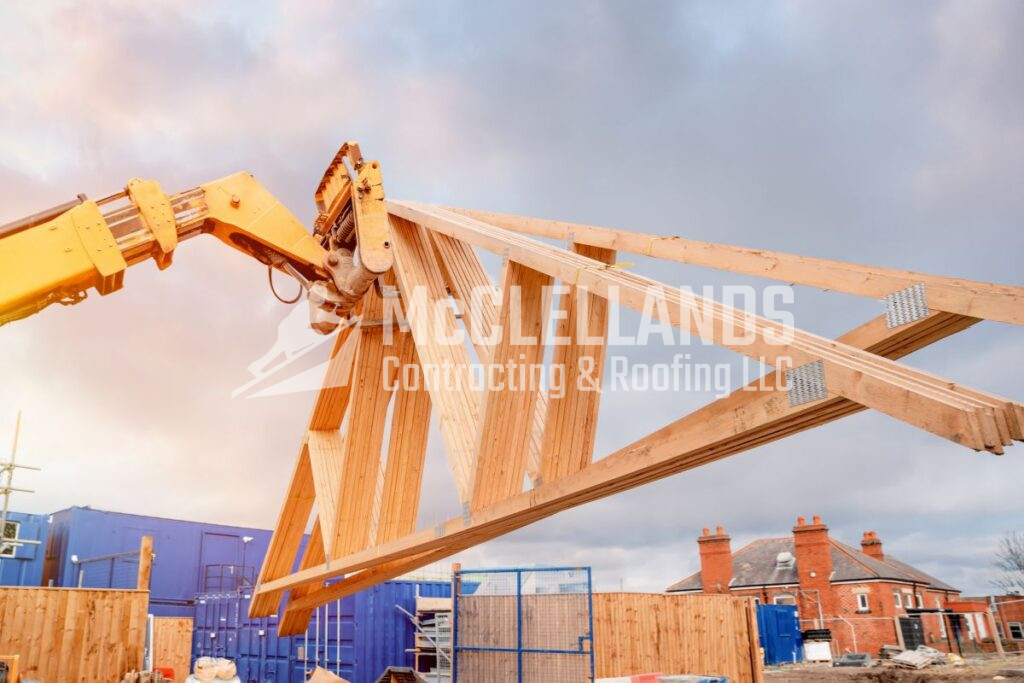
The Fink truss is a triangular-shaped roof truss design with a distinctive design. It consists of two diagonal beams that meet at the apex, forming a V or W shape.
5. Pratt Truss
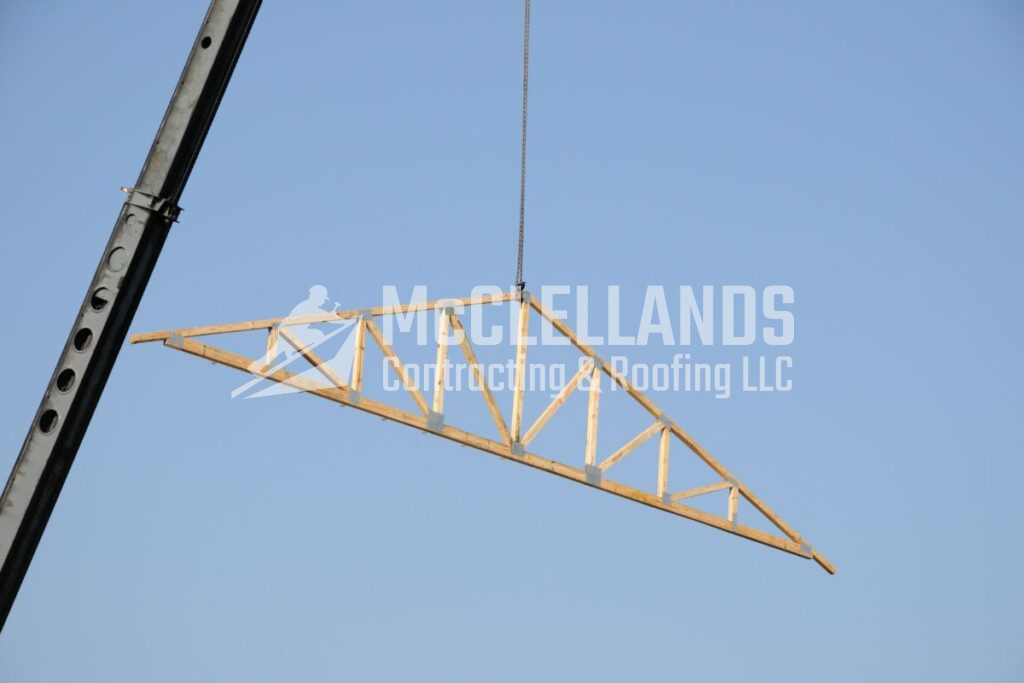
The Pratt truss is a popular roof truss design named after its inventor, Caleb Pratt. It consists of two diagonal beams, two vertical posts, and a horizontal beam at the bottom. The diagonal beams are located at the bottom of the truss, making it more stable and rigid. Pratt trusses are used for industrial buildings, warehouses, and large commercial structures. In fact, it’s one of the most used styles for steel trusses due to its remarkable efficiency.
6. Girder Truss
Girder truss systems, which allow the roof to change direction, are employed in structures shaped like an L or T. Integrating these trusses into a roof’s design eliminates load-bearing walls below, allowing for open floor plans. Girder trusses are used in hip roof designs—a type of roofing where the roof slopes upward to its peak on all sides of the building—to join the hip roof region to the main roof.
7. Mono Truss
The mono truss is a simple roof truss design with a single sloping beam. It is inclined in only one direction and is used to produce multi-level rooflines. Mono trusses can also be used as extensions to an existing structure. They are commonly used for small-scale buildings like residential homes, sheds, and barns.
8. Parallel Chord Truss
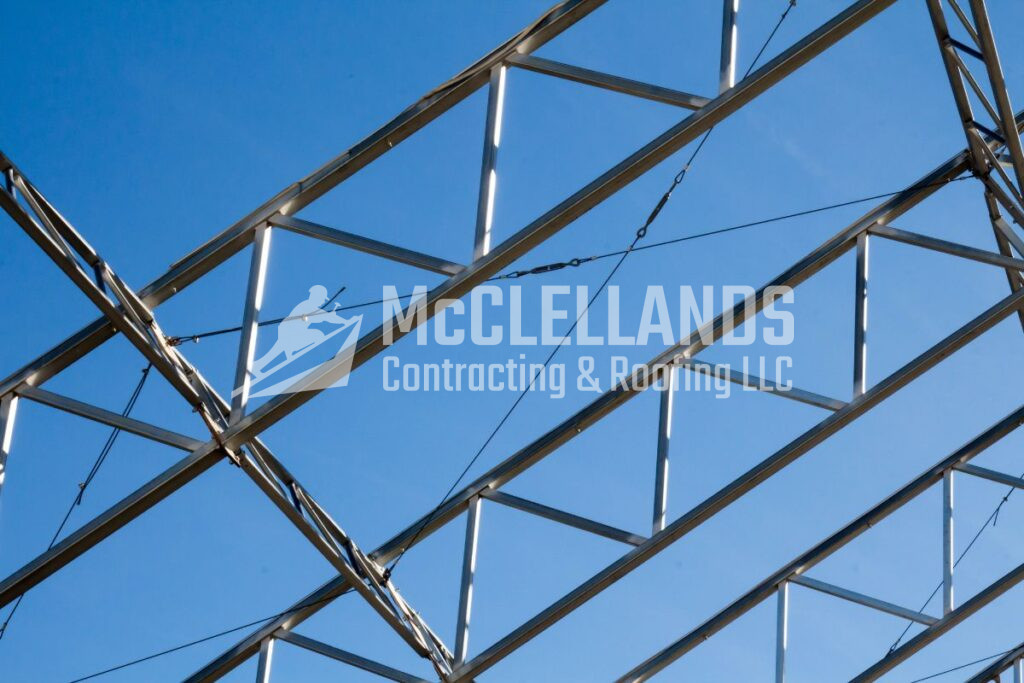
Two chords run parallel and are supported by reinforcement trusses in the center of the bottom and top chords. This style of roof truss reduces humidity and conditions for mold by creating a fume barrier. Large-scale buildings, such as commercial buildings, industrial structures, and warehouses, often acquire parallel chord trusses.
9. King Post Truss
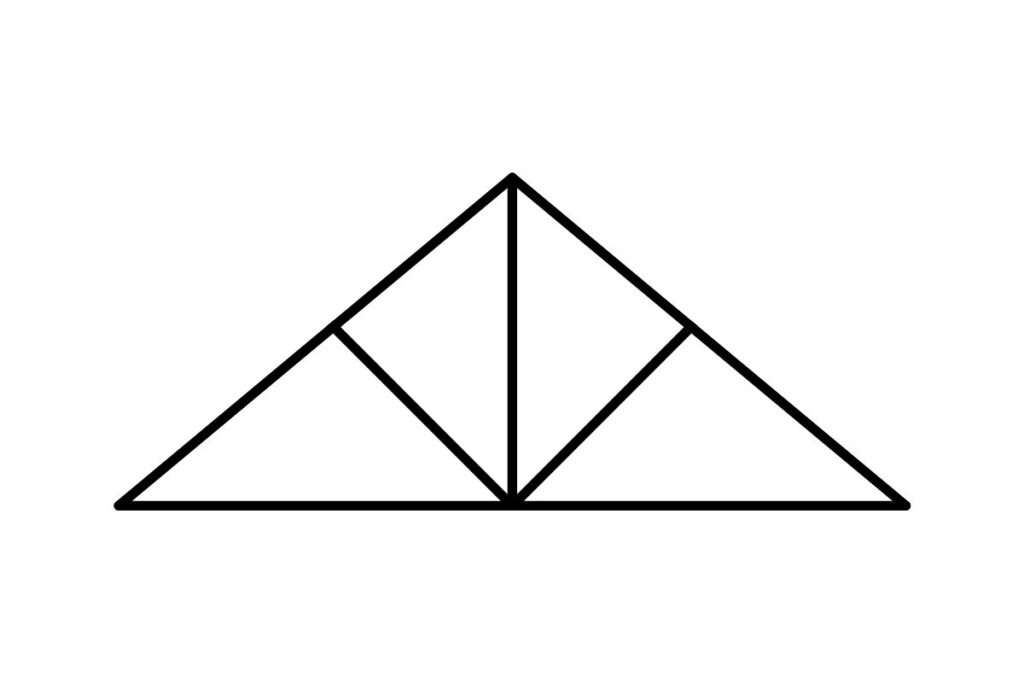
The king post truss is the simplest and most common type of roof truss. It consists of a vertical post, two sloping beams, and a horizontal beam at the top. The vertical post, known as the king post, supports the apex of the truss and provides stability to the structure. Small-scale buildings, such as residential homes, sheds, and barns, often use this type of truss.
10. Dual Pitch Truss
Dual-pitch trusses are a type of roof truss with two different slopes, widely used for residential homes, commercial buildings, and industrial structures. They comprise a series of triangles connected by webbing, providing strength and support while evenly distributing the roof's weight. Dual pitch trusses can be used in buildings with large open spaces and can be aesthetically pleasing, adding visual interest and character to a building's design. If you hire experts, they will ensure dual-pitch trusses are appropriately designed and installed, providing a safe and attractive roof for your building.
Call McClellands Contracting and Roofing For A Roof Replacement In Pittsburgh
It is crucial to select a reliable contractor with expertise in the field to ensure a reliable and sturdy roof installation.
At McClellands Contracting and Roofing, we prioritize the importance of a strong and dependable roof for your home. We have a team of skilled professionals who are dedicated to providing quality roof replacement services, ensuring that your investment is well-protected, and that your family's safety is our top priority.
With our expertise, you can trust that your roof installation will be completed with the level of attention and care it needs, leaving you with peace of mind for years to come. Feel free to call us at (412) 353-5660 to safeguard your home and family with a reliable roof installation from McClellands Contracting and Roofing.

